Understanding Executive Orders of the President
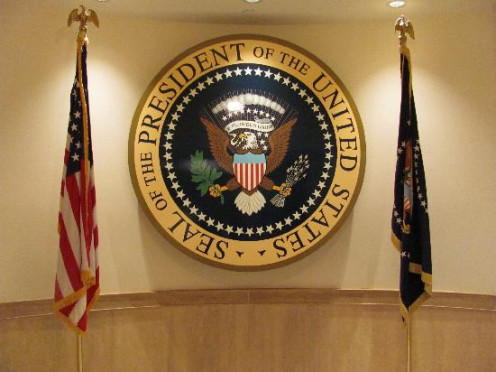
Are executive orders constitutional?
In total, 15,344 executive orders have been issued by 43 Presidents of the United States. Beginning with George Washington, nearly every U.S. President has issued executive orders, with the exception of William Henry Harrison. Franklin D. Roosevelt issued the greatest number of executive orders (3,721); however, he also served three terms in office. And although William Henry Harrison didn’t issue any at all, he died of pneumonia after only 32 days in office, John Adams, James Madison, and James Monroe issued only one executive order during their respective terms.
On average, U.S. Presidents issue nearly 350 executive orders during their time in office. President Barack Obama issued 193 thus far in six years; and, this year, there is much debate regarding his plans to sign an executive order regarding immigration.
Constitutionally, executive orders are permissible, in fact, implied, according to Article II:
“The executive power shall be vested in a President of the United States of America”; and that he "shall be Commander in Chief of the Army and Navy of the United States." (Italics added demonstrate implication).
Furthermore, the issuance of executive orders is permissible, expressly granted, according to certain federal statutes passed by Congress. Executive orders are used for everything from routine administrative matters and internal operations of federal agencies to broader policies and programs. (U.S. Department of Justice.). More importantly, executive orders have the full force of law.
Therefore, to argue, generally, that the President does not have the Constitutional authority to issue executive orders, is moot. He does. To argue that the number of executive orders issued is indicative of an “imperialistic presidency” is just about ridiculous. Throw those two arguments in the trash can and what remains to debate is: what is the content of the executive order?
Now, whether the president has issued an unconstitutional mandate is a matter for judicial review.
FDR Signs E.O. 9066 - It is still "Good Law"
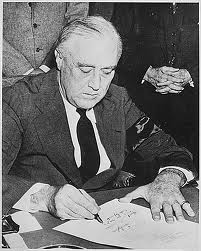
Result of E.O. 9066 - Notice to Aliens of Enemy Nationalities
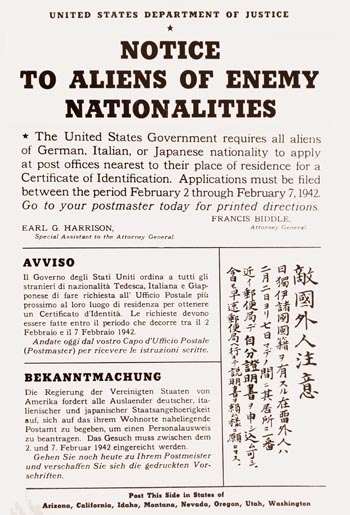
When an Executive Order is Constitutional
Abraham Lincoln issued the Emancipation Proclamation as a war measure (just one of his 48 orders); Woodrow Wilson, who issued more than 1800 executive orders, issued one to arm the U.S. before the country entered World War I. Franklin Roosevelt used an executive order to create Japanese internment camps, which is still permissible under the theory of “national security” though it was questioned in the case of Korematsu v. United States.
But not all executive orders need to relate to war measures; some are related to the economy or civil liberties. President Kennedy issued Executive Order 10925 (one of his 214 orders) in 1961 to require government contractors to "take affirmative action to ensure that applicants are employed and that employees are treated during employment without regard to their race, creed, color, or national origin." Similarly, to combat discrimination, President Johnson issued Executive Order 11246 (one of his 325) in 1965 and established requirements for non-discriminatory practices in hiring and employment on the part of U.S. government contractors.
It is clear that these executive orders by presidents Kennedy and Johnson were a follow up to Executive Order 10479 signed by President Dwight D. Eisenhower, in 1953, which established the anti-discrimination Committee on Government Contracts, and Executive Order 8802 issued by President Franklin D. Roosevelt in 1941, which established the Fair Employment Practices Commission to enforce the new ban on discriminatory employment practices by Federal agencies and all unions and companies engaged in war-related work.
President Johnson Bans Discrimination with E.O. 11246
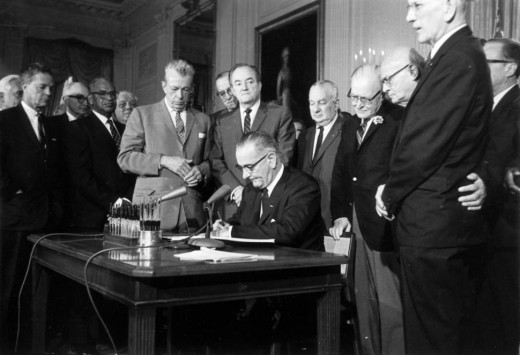
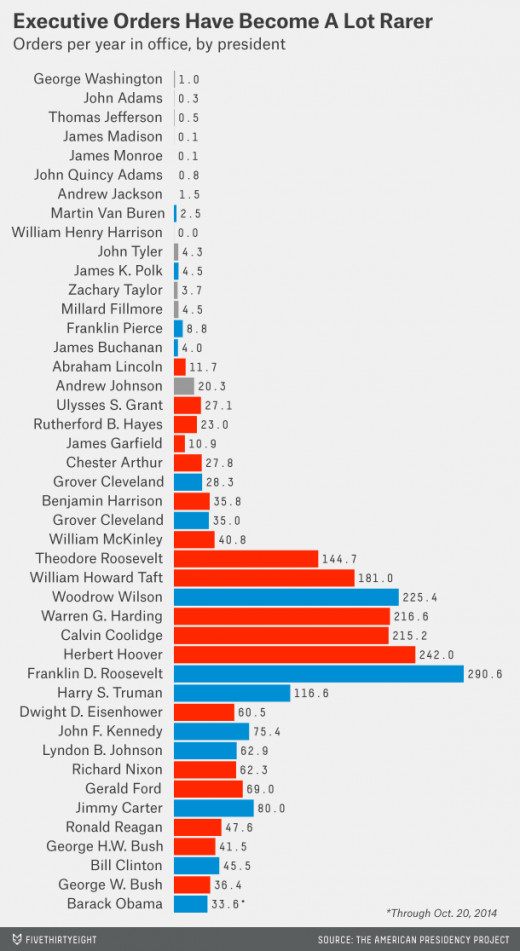
The American Presidency Project
- Executive Orders
The total number of Executive Orders issued by presidential term.
President Truman Seized U.S. Steel Industry with E.O. 10340
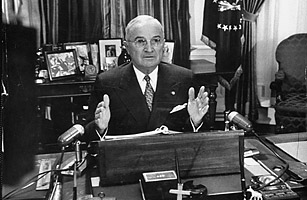
When an Executive Order is Unconstitutional - A Case Study
When the nation was confronted with a possible strike by steel workers in 1952, President Truman issued Executive Order 10340 directing the Secretary of Commerce to seize and operate most of the steel mills. The question of whether this order was within President Truman's constitutional authority was questioned in the case of Youngstown Co., v. Sawyer. The Supreme Court of the United States found that the content of the order was, indeed, unconstitutional, though Justice Frankfurter made clear that the Court:
"...shall not attempt to delineate what belongs to [the President] by virtue of his office beyond the power even of Congress to contract; what authority belongs to him until Congress acts; what kind of problems may be dealt with either by the Congress or by the President or by both, cf. La Abra Silver Mng. Co. v. United States, 175 U.S. 423 ; what power must be exercised by the Congress and cannot be delegated to the President."
The case provided some clarity in understanding the powers of the Executive and Legislative branches of government: while the powers of the President “are not as particularized as are those of Congress…unenumerated powers do not mean undefined powers.”
More importantly, the case reminds us that not all powers among the various branches of government are clear-cut in the Constitution. Justice Jackson opined with three categories of authority of the president:
- “When the President acts pursuant to an express or implied authorization of Congress, his authority is at its maximum, for it includes all that he possesses in his own right plus all that Congress can delegate. In these circumstances, [343 U.S. 579, 636] and in these only, may he be said (for what it may be worth) to personify the federal sovereignty. If his act is held unconstitutional under these circumstances, it usually means that the Federal Government [343 U.S. 579, 637] as an undivided whole lacks power. A seizure executed by the President pursuant to an Act of Congress would be supported by the strongest of presumptions and the widest latitude of judicial interpretation, and the burden of persuasion would rest heavily upon any who might attack it.
- When the President acts in absence of either a congressional grant or denial of authority, he can only rely upon his own independent powers, but there is a zone of twilight in which he and Congress may have concurrent authority, or in which its distribution is uncertain. Therefore, congressional inertia, indifference or quiescence may sometimes, at least as a practical matter, enable, if not invite, measures on independent presidential responsibility. In this area, any actual test of power is likely to depend on the imperatives of events and contemporary imponderables rather than on abstract theories of law.
- When the President takes measures incompatible with the expressed or implied will of Congress, his power is at its lowest ebb, for then he can rely only upon his own constitutional powers minus any constitutional powers of Congress over the matter. Courts can sustain exclusive presidential control in such a case only by disabling [343 U.S. 579, 638] the Congress from acting upon the subject. Presidential claim to a power at once so conclusive and preclusive must be scrutinized with caution, for what is at stake is the equilibrium established by our constitutional system.”
Government Seized Steel Industry to Avoid Nationwide Strike
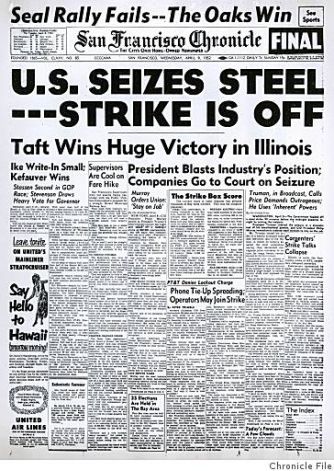
President Obama Speaks about Immigration Reform
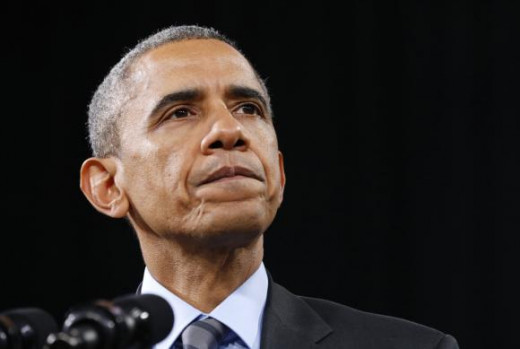
Share your opinion
Should President Obama issue an executive order regarding immigration?
- 42% Yes
- 58% No
This poll is now closed to voting.
What Does the Law Say?
What Does the Law Say?
- Immigration Reform and Control Act of 1986 (IRCA) | USCIS
US Department of Labor: ESA's mission is to enhance the welfare and protect the rights of American workers by enforcing employment laws.
The Weakest Position for President Obama
According to the U.S. Department of Homeland Security, "on November 20, 2014, the President announced a series of executive actions to crack down on illegal immigration at the border..." although these initiatives have not yet been implemented, they include:
- "Expanding the population eligible for the Deferred Action for Childhood Arrivals (DACA) program to young people who came to this country before turning 16 years old and have been present since January 1, 2010, and extending the period of DACA and work authorization from two years to three years
- Allowing parents of U.S. citizens and lawful permanent residents who have been present in the country since January 1, 2010, to request deferred action and employment authorization for three years, in a new Deferred Action for Parental Accountability program, provided they pass required background checks
- Expanding the use of provisional waivers of unlawful presence to include the spouses and sons and daughters of lawful permanent residents and the sons and daughters of U.S. citizens
- Modernizing, improving and clarifying immigrant and nonimmigrant programs to grow our economy and create jobs
- Promoting citizenship education and public awareness for lawful permanent residents and providing an option for naturalization applicants to use credit cards to pay the application fee"
If there is a conflict with an executive order regarding immigration, the weakest position for President Obama would be if his order was incompatible with Congress’ expressed Constitutional power in Article I “to establish a uniform rule of naturalization” and/or incompatible with the legislation of the Immigration and Nationality Act (INA) and the Immigration Reform and Control Act of 1986 (IRCA).
Eric Posner, professor at University of Chicago Law School and co-author of The Executive Unbound, recently commented about the possibility of President Obama issuing an executive order regarding immigration: “The only difference between the president and his predecessors is that the president has openly declared the de facto policy of his predecessors. We might disagree about whether this move is wise but it is not a constitutional violation.” (Posner.).
Other Executive Orders on Immigration
President
| E.O. Number, Title & Date
| Read the E.O. Online
|
|---|---|---|
Ronald Reagan
| 12324 - Interdiction of Illegal Aliens - 9/29/81
| http://www.presidency.ucsb.edu/ws/?pid=44317
|
George H. Bush
| 12807 - Interdiction of Illegal Aliens - 5/24/92
| http://www.presidency.ucsb.edu/ws/?pid=23627
|
William J. Clinton
| 12989 - Economy and Efficiency in Government Procurement Through Compliance With Certain Immigration and Naturalization Act Provisions - 2/13/96
| http://www.gpo.gov/fdsys/pkg/FR-1996-02-15/pdf/96-3646.pdf
|
Review President Obama's executive actions on immigration.
- U.S. Citizenship and Immigration Services (Dept. of Homeland Security)
Important notice: These initiatives have not yet been implemented, and USCIS is not accepting any requests or applications at this time.
Works Cited
Constitution of the United States (1787).
Exec. Order No. 8802: Prohibition of Discrimination in the Defense Industry (June 25, 1941).
Exec. Order No. 9066: Resulting in the Relocation of Japanese (Feb. 19, 1942).
Exec. Order No 10340: Directing the Secretary of Commerce to Take Possession of and Operate the Plants and Facilities of Certain Steel Companies. (Apr. 8, 1952).
Exec. Order No. 10479: Establishing the Government Contract Committee (Aug. 13, 1953).
Exec. Order No. 10925: Establishing the President's Committee on Equal Employment Opportunity (Mar. 6, 1961).
Exec. Order No. 11246: Equal Employment Opportunity (Sept. 28, 1965).
Korematsu v. United States, 323 U.S. 214 (1944).
Posner, Eric. “The Constitutional Authority for Executive Orders on Immigration is Clear.” New York Times. Nov. 18, 2014. http://www.nytimes.com/roomfordebate/2014/11/18/constitutional-limits-of-presidential-action-on-immigration-12/the-constitutional-authority-for-executive-orders-on-immigration-is-clear. Access date: 11/23/14.
U.S. Department of Justice. “Executive Orders: on Privacy and Civil Liberties and the Information Sharing Environment.” https://it.ojp.gov/default.aspx?page=1261. Access date: 11/23/14.
Youngstown Co., v. Sawyer, 343 U.S. 579 (1952).
By Liza Lugo, J.D.
Copyright © 2014. All Rights Reserved.
Ms. Lugo retains exclusive copyright and publishing rights to all of her articles and photos by her located on Hub Pages. Portions of articles or entire content of any of these articles may not be used without the author's express written consent.Persons plagiarizing or using content without authorization may be subject to legal action. The articles by Ms. Lugo regarding legal issues are purely academic in nature and do not constitute legal advice. For advice on legal matters, consult a licensed attorney in your jurisdiction.
Permission requests may be submitted to liza@lizalugojd.com.
Originally written and published on November 23, 2014. Latest corrections or edits made on February 23, 2015.
Read the new book from Liza Lugo, J.D., where the most important executive orders ever issued are explained
© 2014 Liza Treadwell Esq aka Liza Lugo JD



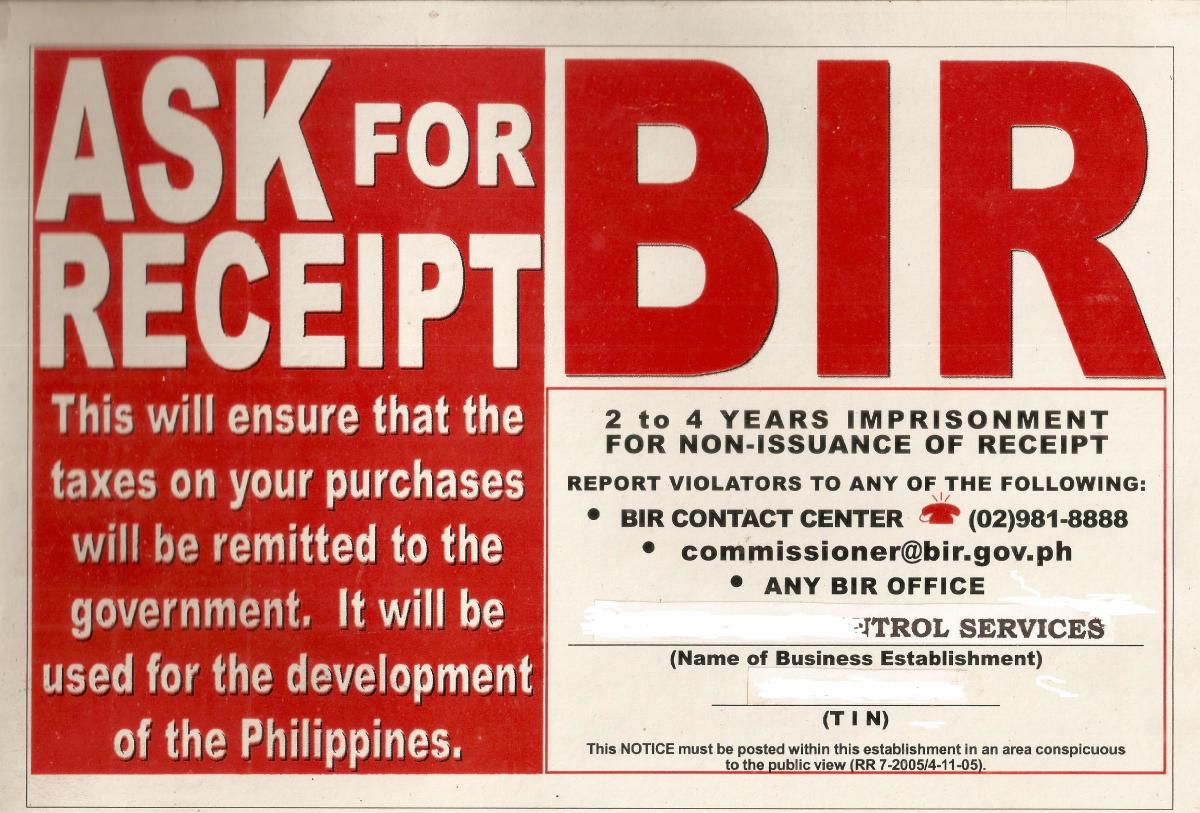
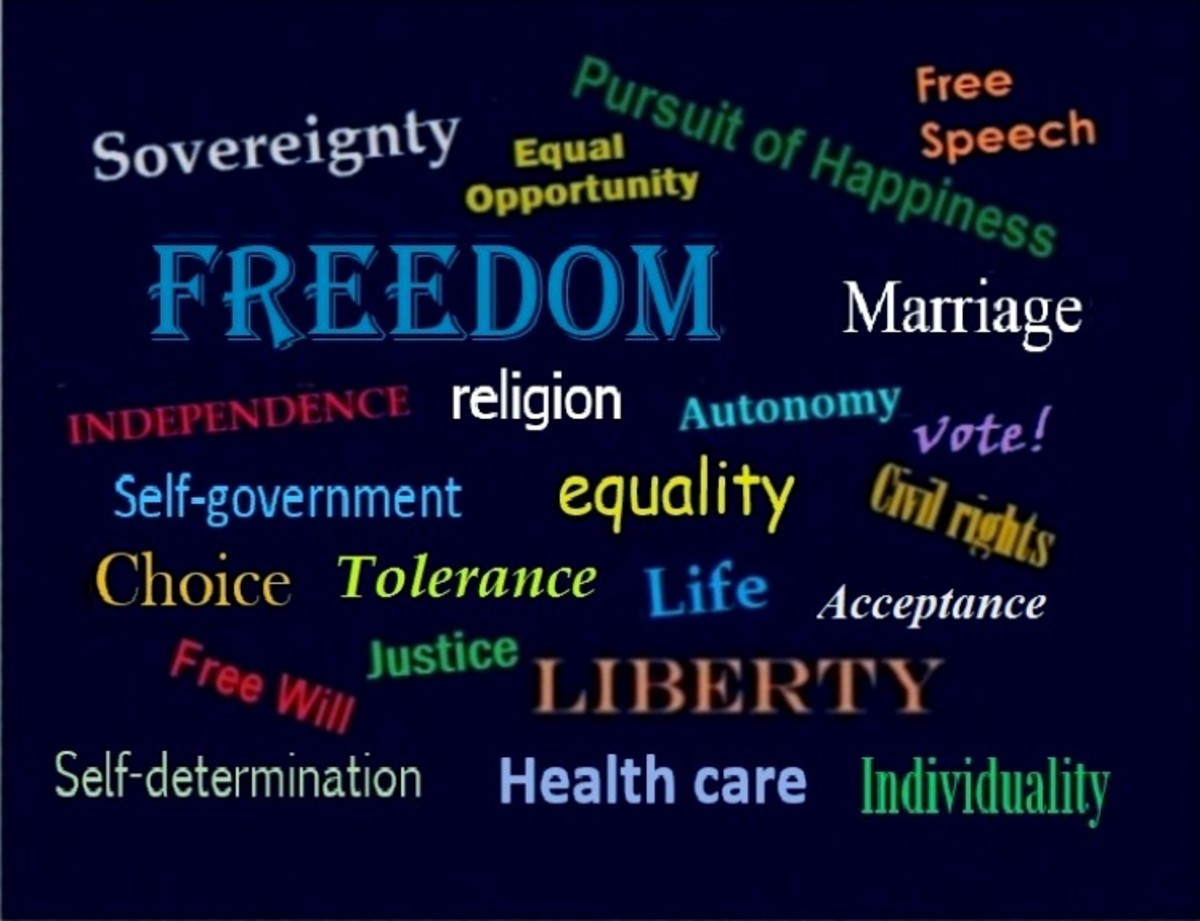

![Obama's General Motors [GM] Tarp Bailout - The Untold Details Obama's General Motors [GM] Tarp Bailout - The Untold Details](https://images.saymedia-content.com/.image/t_share/MTc0MTU0NDA1OTcxNzY1MTE2/obama-general-motors-gm-tarp-bailout-untold-details.jpg)